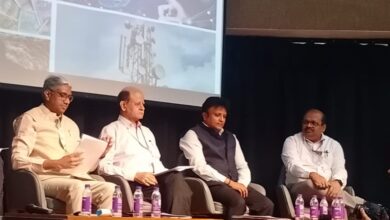The Impact of Generative AI on the Telecommunications Industry

Telecommunications companies are leveraging their robust network infrastructure to manage and offer Large Language Models (LLMs). With their experience in handling IT infrastructure and cloud services, these companies provide LLM-as-a-Service, opening new financial avenues and enhancing the value for business clients. As the reliance on instant communication grows, telecom companies find Gen AI integral for edge services, where users demand real-time responses.
The anticipated market value for Gen AI is projected to reach a staggering $967.65 billion USD by 2032, flourishing at an annual growth rate of 39.6%. This growth is driven significantly by the demand for comprehensive language models from enterprises, startups, and public administrations, which typically cannot afford the necessary computational infrastructure.
Successfully managing infrastructure and risk is a challenge in integrating Gen AI within telecom services. Bloomberg Intelligence estimates that the infrastructure-as-a-service market for Gen AI, utilized for training LLMs, could rise to $247 billion USD by 2032. However, the widespread deployment of distributed architectures could expand potential cyberattack surface areas, amplifying the necessity for robust and scalable security solutions to prevent data leakage and safeguard identifiable information.
Concerns regarding copyright, security, and ecological impact are influencing the pursuit of greater control over data. Companies must invent new strategies to lessen the anticipated strain on graphic processors and overall AI impact on network infrastructure and the environment. The total cost of AI infrastructure ownership will reflect these factors.
Telecommunication firms serve as natural AI-as-a-service providers, thanks to their extensive national infrastructure and B2B offerings. Innovative solutions from F5 Networks enable these companies to efficiently deploy and secure advanced Gen AI systems. By addressing challenges with preparedness and scalable security solutions, telecom companies can become trusted providers of LLM services tailored to industry-specific demands, positioning themselves competitively in the market for the forthcoming years.
Advantages of Generative AI in Telecommunications:
– Enhanced Customer Service: Generative AI can be used to improve customer service interactions, providing quick and personalized responses to customer inquiries, reducing wait times, and improving overall customer satisfaction.
– Network Optimization: AI can analyze traffic patterns and predict peak usage times, enabling telecommunications companies to optimize network resources and prevent congestion.
– New Revenue Streams: By offering AI-as-a-service, telecom companies can create new revenue streams through selling advanced analytical capabilities to businesses.
– Improved Security: AI can monitor network traffic for unusual patterns that may indicate a security threat, allowing for real-time threat detection and response.
Disadvantages of Generative AI in Telecommunications:
– High Initial Investment: Developing and implementing AI within telecommunications infrastructure can involve significant initial investments in terms of capital and expertise.
– Complexity of Integration: Integrating AI systems within existing telecom frameworks can be complex, requiring technological compatibility and extensive training for staff.
– Job Displacement: The deployment of AI may lead to automation of jobs currently filled by humans, raising social and ethical concerns about the impact on employment.
– Data Privacy Concerns: The use of AI in handling large amounts of user and traffic data raises concerns about privacy and the handling of sensitive information.
Key Challenges and Controversies:
– Data Security: As AI systems process large quantities of data, ensuring the security and integrity of this data is a critical challenge.
– Regulatory Compliance: Companies must navigate the complex legal landscape regarding data privacy and AI, ensuring compliance with regulations like GDPR.
– Environmental Impact: The energy consumption required for running powerful AI models is a growing environmental concern.
Related Links:
For more about the latest developments in the telecommunications industry:
– International Telecommunication Union (ITU)
– GSMA
Please note that while these links are to the main domains of relevant organizations, specific subpage URLs may also contain pertinent information. Always ensure that you are accessing up-to-date and accurate information.



